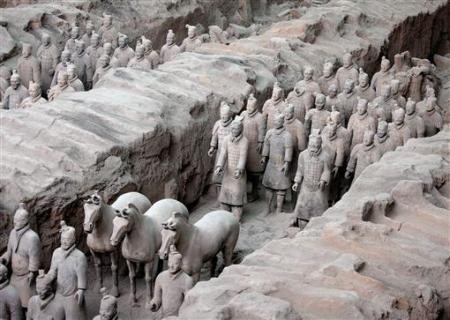
One of the most amazing archaeological discoveries of the 20th century is the terracotta army buried along with the first emperor of China. Scientists have recently found how the bronze triggers were manufactured for the crossbows of the 8,000 terracotta warriors.
Craftsmen used to work in small teams to build the set of bronze pieces for the tomb of the Emperor Qin Shi Huang, according to a new study.
In 1970s, when the tomb was first uncovered, it revealed many life-like terracotta statues of musicians, artisans, horses, officials, musicians and soldiers. 700,000 laborers worked on the epic tomb, many of whom were people or convicts who were in debts to the empire, said study co-author Xiuzhen Janice Li, an archaeologist.
The hunt for the weapons had an important purpose: to ensure the emperor's military power and the available resources afterlife.
Craftsmen sculpted around 8,000 colorful warriors and wore stone armor, crossbows, lances and swords.
It was not known as to how these ancient weapons were made. Wood or bamboo was used to make crossbows that decomposed long ago. The only things that remained were tips and triggers for the bow, Li told to Live Science.
To know more about how the massive tomb was built, researchers measured about 216 crossbow triggers from the tomb and found that the crossbow metal pieces were never used in real battle, instead were built exclusively for the tomb. The team examined the trigger spots in the tomb and the difference in the shape and size of the pieces.
"He abolished any privileges inherited by blood and the population was divided in small groups that were collectively responsible for their adherence to imperial laws. For example, if someone in one of these groups committed a crime, all of them were held responsible, unless they reported the culprit and allowed them to be punished." Martinón-Torres wrote in an email to Live Science.
"The cellular workshop model we postulate for the weapons manufacture in the mausoleum would have also offered useful flexibility for armies on the move," he said.
















